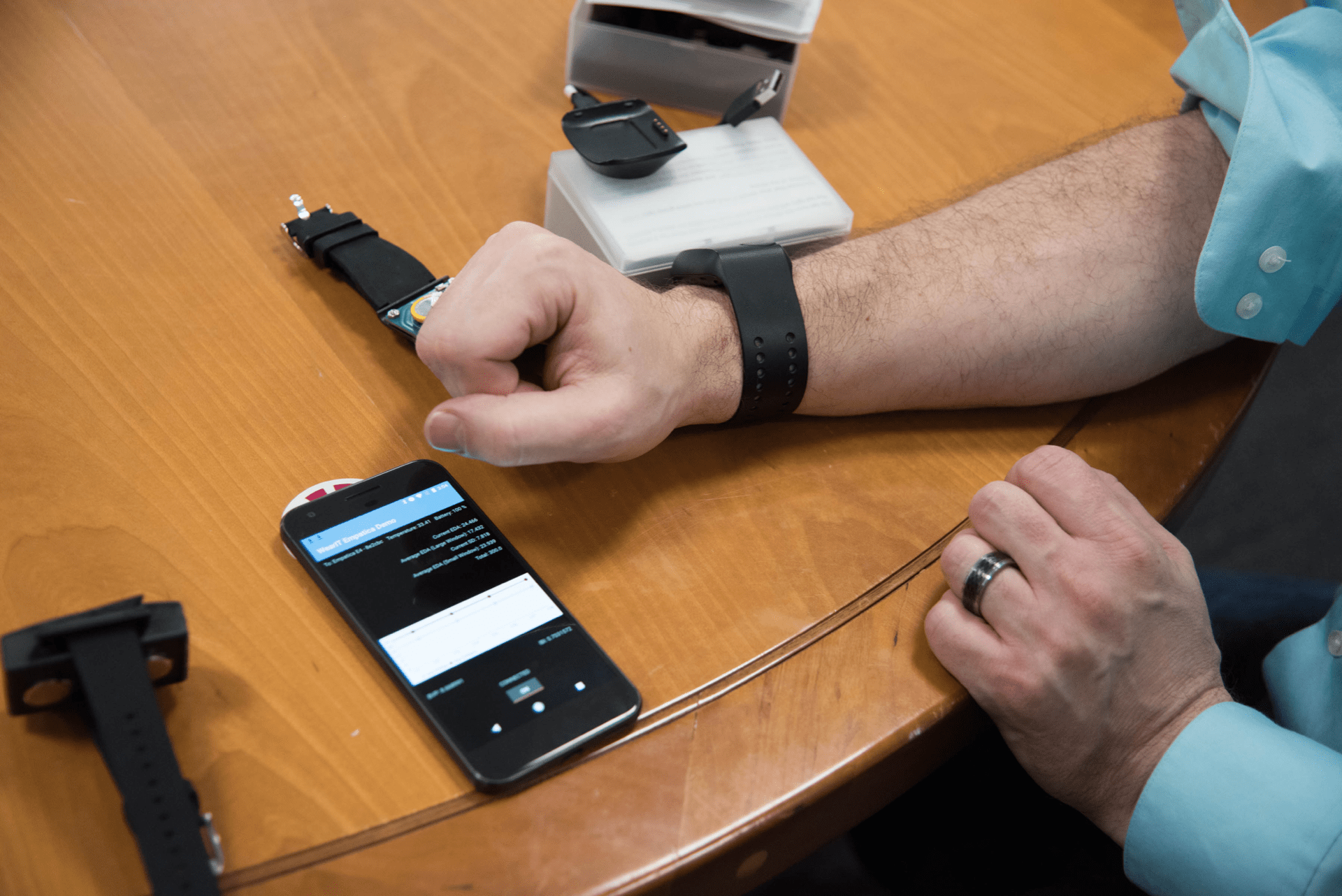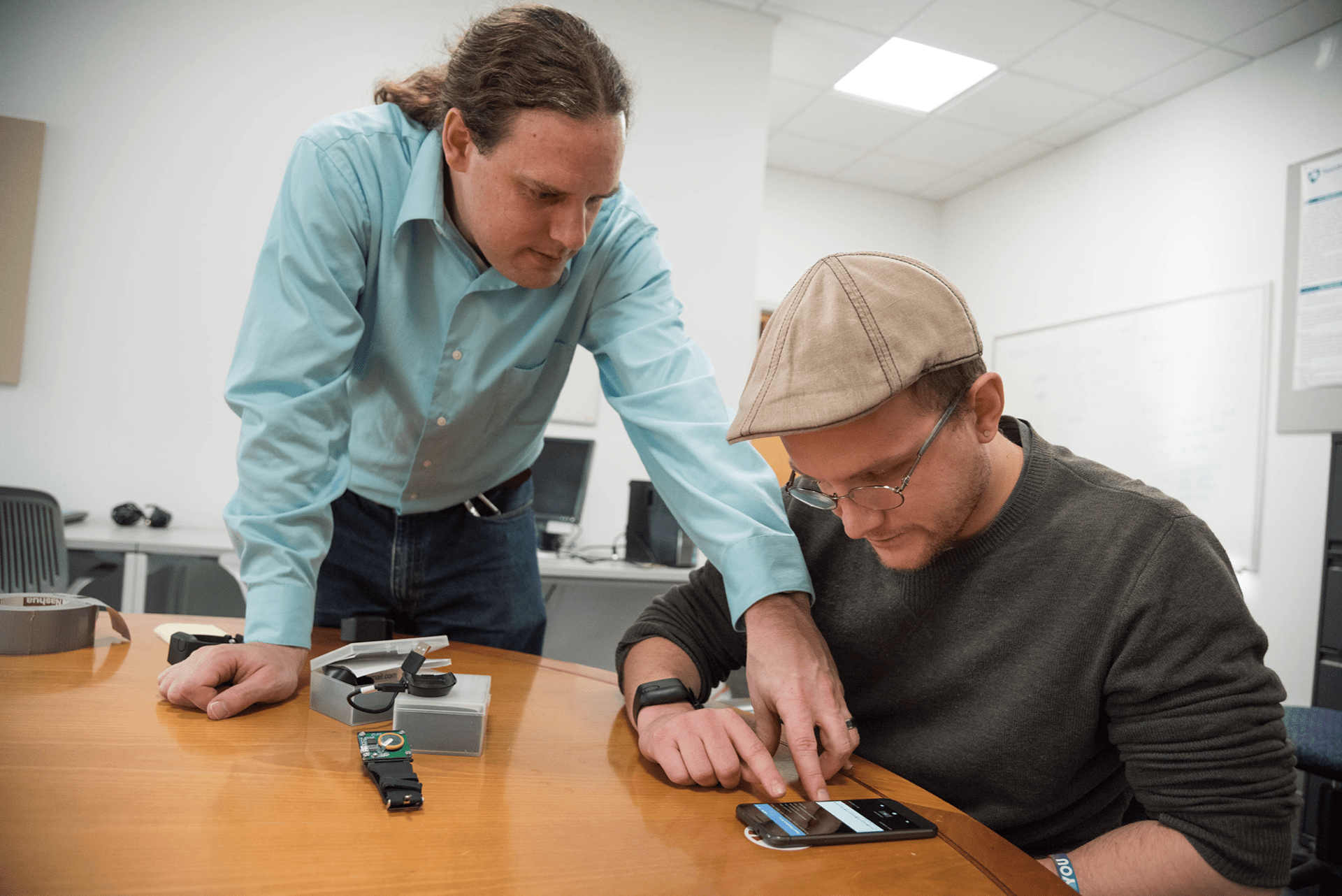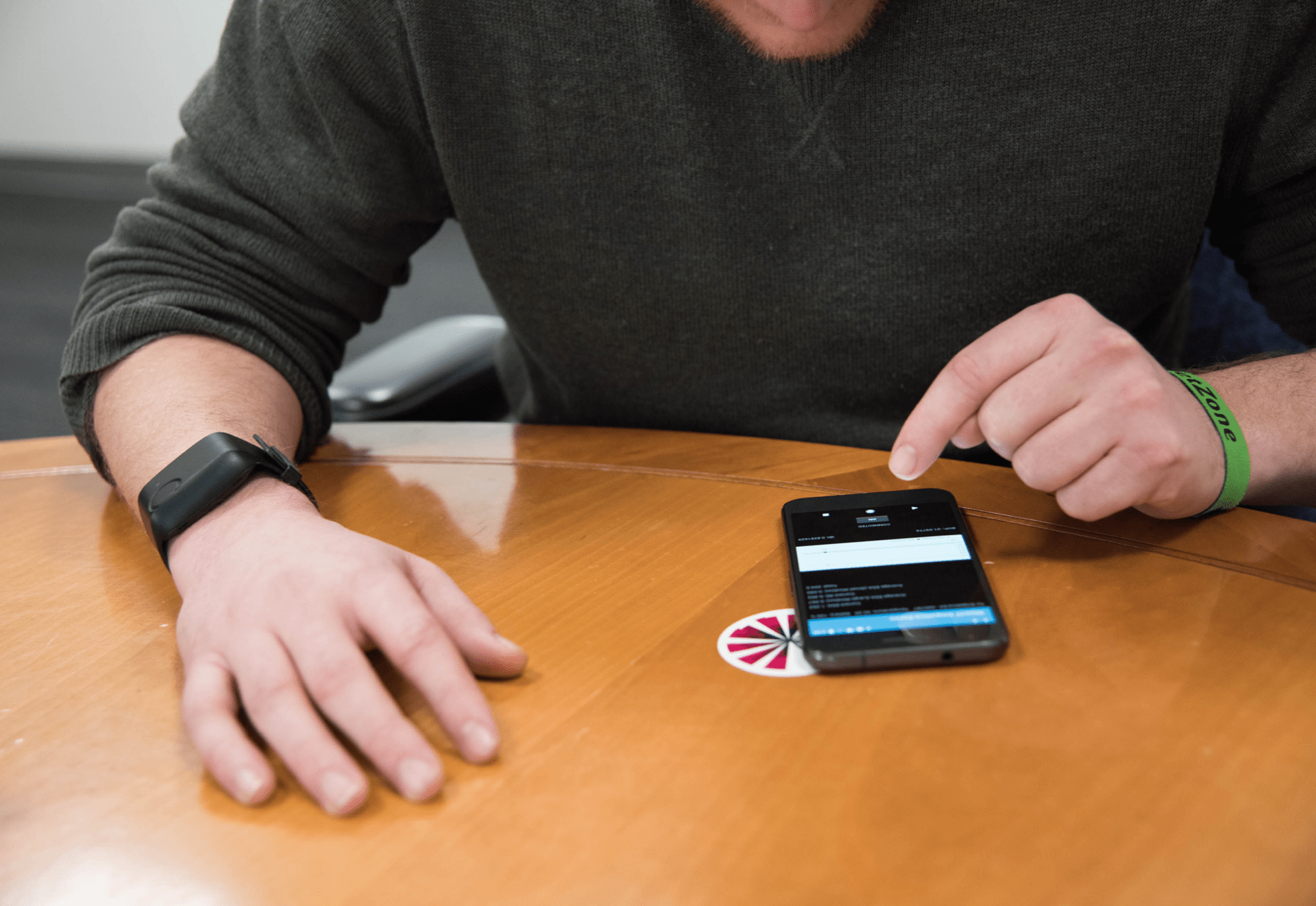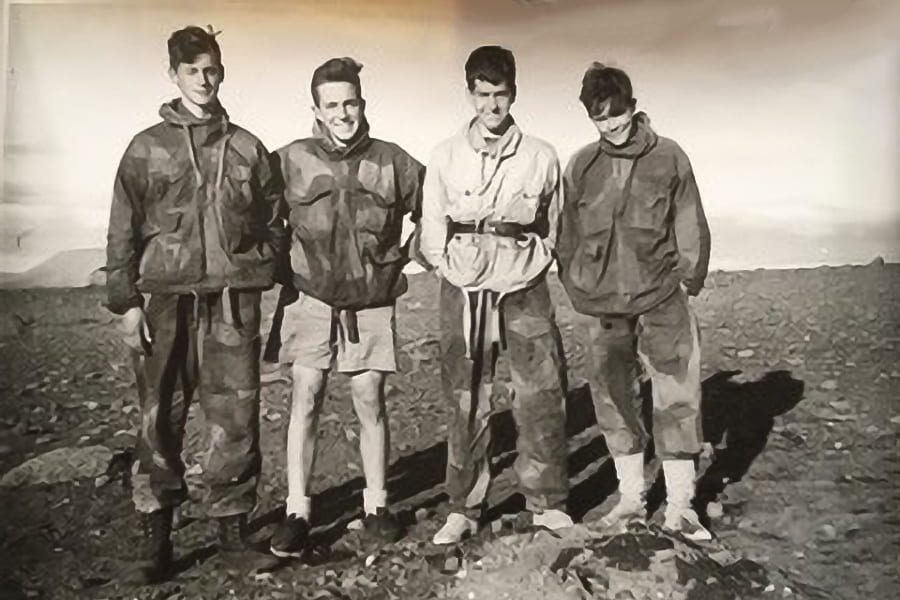Placing technology in the hands of those who need it
When Zita Oravecz and Timothy R. Brick, associate professors of human development and family studies at Penn State, needed to collect real-time data from human research subjects, they found the existing tools at their disposal were lacking.
Oravecz, Brick, and their collaborators were interested in studying psychological states like core affect, which captures how pleasant and emotionally activated a person feels at a specific moment. The data they needed was a combination of self-reported responses logged through recurring surveys and passively measured metrics, including heart rate and skin conductance. Their goal was to combine these measures to monitor a person’s psychological state and provide support both when they needed an intervention and were open to receiving it. But no tools on the market at that time allowed them to collect and analyze that data in real time.
Given this deficit in the ability to collect the data they needed, necessity became the mother of invention. Six years ago, Oravecz and Brick teamed up to develop Wear-IT, a smartphone app that, when combined with wearable technology, allows researchers to collect all the data needed in real time to track, analyze, and respond to psychological states, like core affect.
The pair, together with Wear-IT lead software engineer, James Mundie, have now filed a patent application through the Penn State Research Foundation and have plans to spin off a company using the Wear-IT technology. While they developed the app for human subjects research, Oravecz and Brick also realized that it had great potential outside the laboratory as a platform to bring the results of proven research directly to people seeking support for a variety of challenges in their everyday lives.
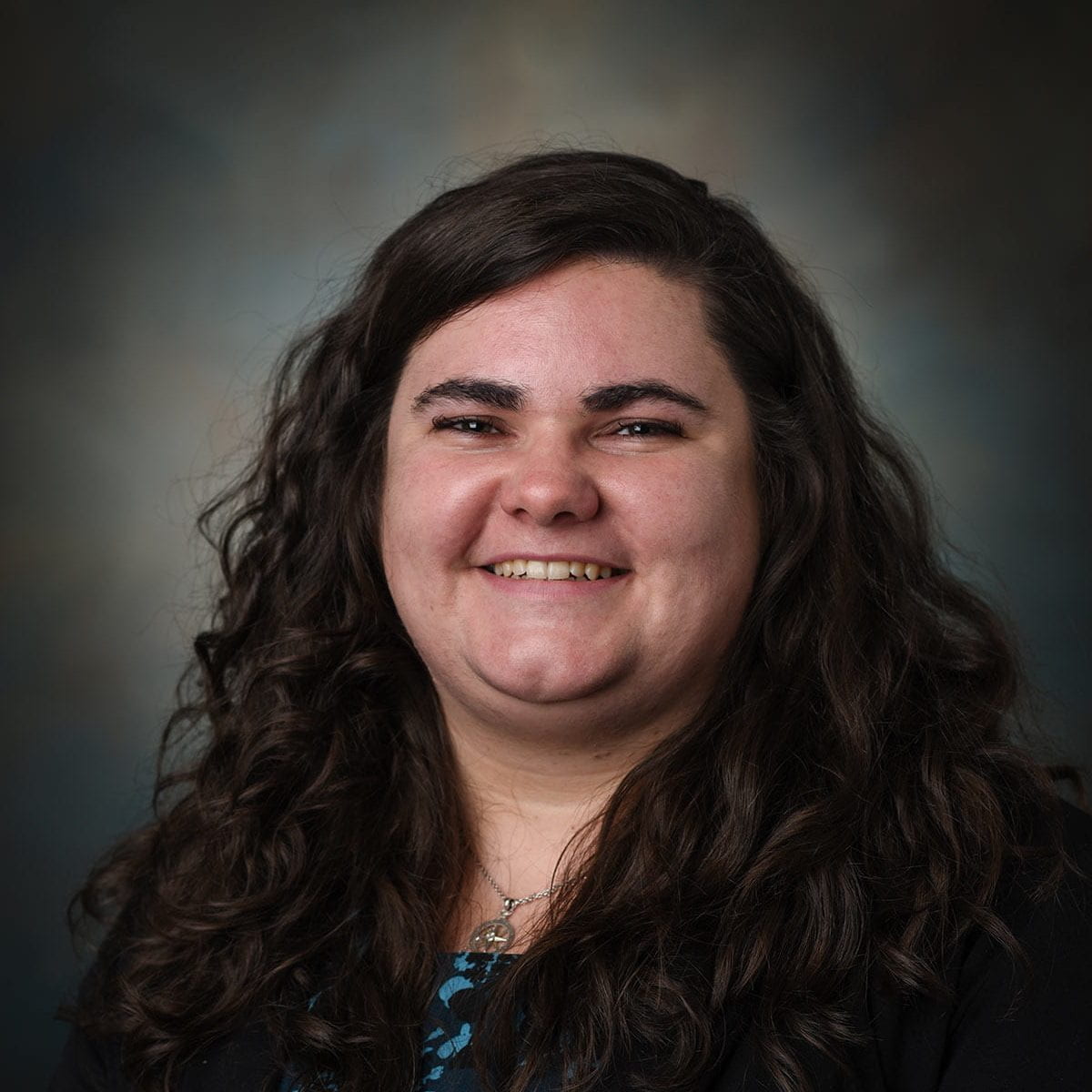
Author
Mary
Campbell
Using a smartphone to help people monitor their health
When exploring consumer applications for this technology, the team identified a couple groups who could benefit most from commercial distribution of the app’s data collection and intervention framework: people with autism spectrum conditions and those recovering from various types of addiction. However, the technology is applicable to anyone who wants to understand their own emotional states and the forces that influence them.
“The technology that we’ve built is applicable to a ridiculously large number of populations. However, based on our research, we think these groups can especially benefit from Wear-IT,” said Brick. “People with autism face daily challenges related to their individual neuroatypicality. People in recovery, for example from alcoholism or opioid addiction, are trying to understand the way that their cravings work so that they can succeed and thrive despite their addiction. And many people—even without a particularly defined mental, behavioral, or health concern—are working to understand their emotions and improve their overall well-being.”
According to Oravecz, “When people are aware of the factors that influence their emotions and levels of stress, craving, or risk, it can really help them see the patterns in the challenges they face and their emotional responses to them. This will hopefully increase their ability to manage daily life and their specific, personal challenges.”
Members of the Wear-IT team utilize data gathered from a smartphone app and wearable technology to assess a person’s psychological state.
Delivering support when it’s needed the most
Oravecz and Brick also wanted the app to intervene when a person was at risk of lapsing into unhealthy behaviors. For example, if a person’s stress level pushed them toward a risk of opioid relapse, the app might deliver a mindfulness intervention right then to help reduce their immediate risk. Later, when the immediate risk was lower, the app might present a set of the person’s data to highlight that they had fewer such risk events when they were regularly attending 12-step meetings or when they were careful to get a good night’s sleep, depending on their individual experience.
“Stress, emotion, and craving play out over multiple timescales, and the interventions that help people manage them need to do the same,” said Brick. “Crisis moments need immediate assistance, and making lifestyle changes takes longer and more sustained effort. Wear-IT allows us to provide both sources of support.”
Initial funding for the project came from the College of Health and Human Development Discovery to Innovation grant program, with additional support from the Social Science Research Institute and the Institute for Computational and Data Sciences. This support allowed the research team to bring in Mundie to develop the initial app. They also explored seed funding to officially launch the business. The Ben Franklin Technology Partners TechCelerator in State College will provide some funding for the company, and the team is pursuing additional funding from the National Institutes of Health Small Business Innovation Research (SBIR) program.
The team also utilized resources through Happy Valley LaunchBox, a program of Invent Penn State, which is a Commonwealth-wide initiative to spur economic development, job creation, and student career success. Staff from Happy Valley LaunchBox consulted with Oravecz, Brick, and Mundie to determine paths to commercialization and discuss the legal details of a spin-off company.
“It’s been very motivating to realize the impact our work can have and to take an entrepreneurial approach to this project,” said Oravecz. “We had to begin by thinking creatively about how to make science accessible to everyone, starting by placing cutting-edge tools in the hands of people who need them.”
The Wear-IT smartphone app asks users a series of questions designed to assess their psychological state. If they are at risk of lapsing into unhealthy behaviors, the app might deliver a mindfulness intervention right then to help reduce their immediate risk. When the immediate risk has passed, the app might also present a set of the user’s data to help them identify and process patterns associated with their risk.
Navigating the challenges of entrepreneurship
Oravecz and Brick were planning to formalize the company in late 2019, but when the COVID-19 pandemic caused disruptions to business and industry around the world in early 2020, the team decided to put a hold on their plans to formally launch the business.
Currently, the software is only available to researchers through the Penn State Social Science Research Institute Survey Research Center. However, the delay has only given the team more time to further refine the app and better understand how consumers can benefit from its use.
“The product is more mature at this point because we’ve had the time to build all of these things to work together—tools for scientific discovery and mechanisms for intervention,” said Brick. “I really like the idea that the work we’re doing can have an impact on real people. That’s the motivation behind commercializing Wear-IT and scaling this for a non-research setting. Where we have scientific evidence that something works, we want to use it to make people’s lives better.”
For Oravecz, “Now that our work is less interrupted by the pandemic, we are excited to continue working on the spin-off company and explore new real-life applications for this technology.”
Photo Credits
Video in header – all via Getty Images:
Sliders Images by CommAgency at Penn State
Video mid-way down the page – all via Getty Images:
Screen video by Orientfootage via Getty Images; screen captures curtious of WearIT app

Author
Mary Campbell




